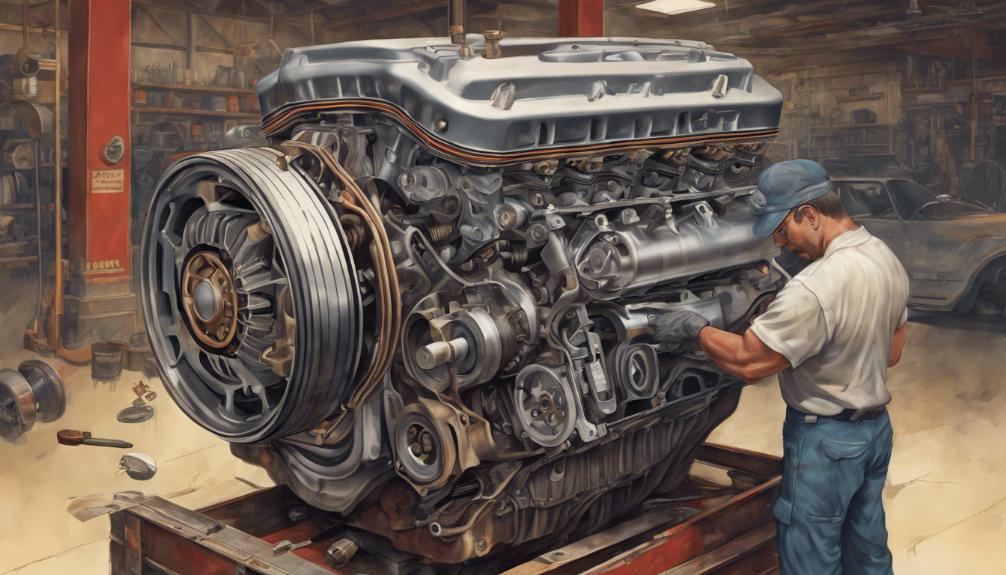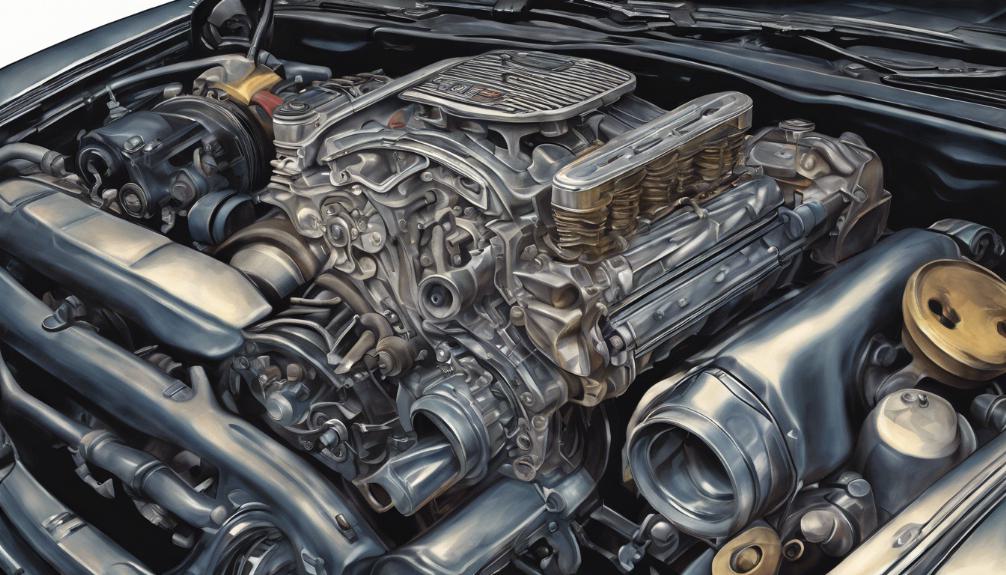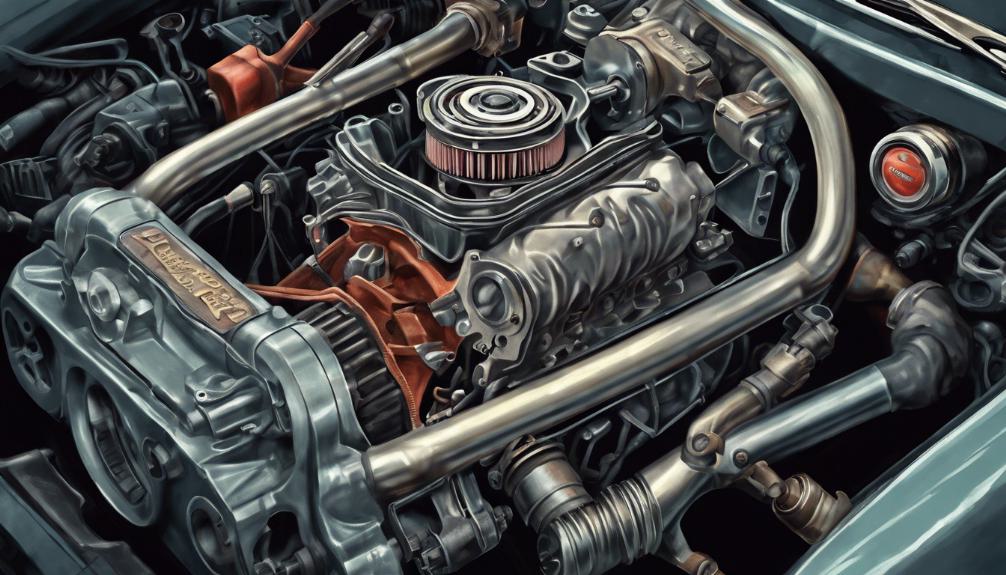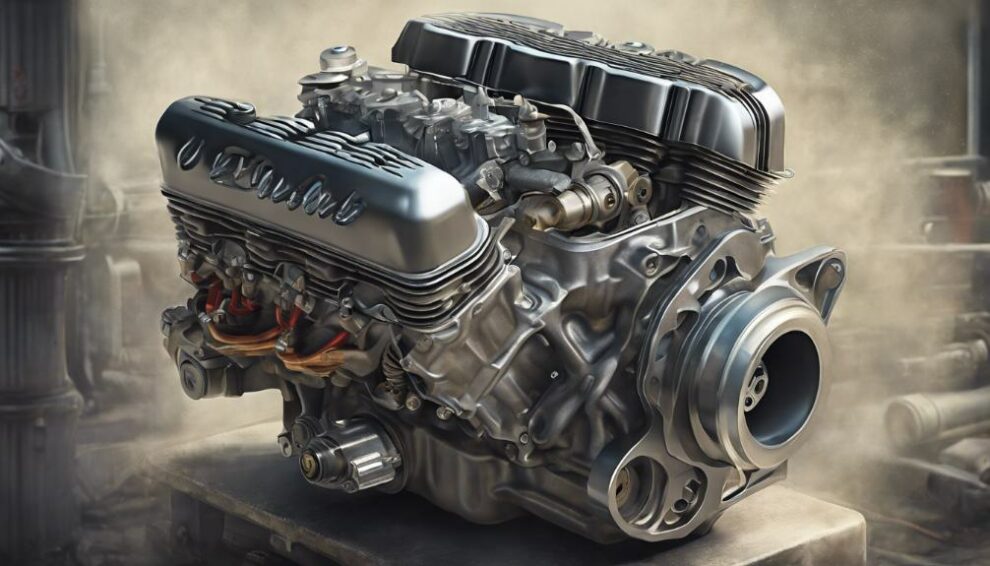If your car shows engine misfires, rough running, strange noises like rattling or knocking, sluggish acceleration, or lacks power during acceleration, you might have a bad timing belt tensioner.
Prompt action is necessary to avoid severe engine damage. Regular maintenance is vital to detect signs of wear timely and guarantee peak engine performance.
Tensioner failures like oil leaks, improper installation, overheating, or spring wear can lead to issues. Listen for unusual noises, check belt tension, scan for trouble codes, and inspect for leaks to diagnose problems.
High-quality replacement parts are key for reliable performance and preventing engine damage. Learn more about preventing costly repairs.
What You Need to Know
- Engine misfires and rough running are common signs of a bad timing belt tensioner.
- Strange noises like rattling or knocking may indicate tensioner issues.
- Sluggish acceleration and lack of power can result from a faulty tensioner.
- Regular maintenance is crucial to prevent failures and ensure top engine performance.
- Use high-quality replacement parts for reliable performance and engine health.
Common Timing Belt Tensioner Failure Signs

If you notice engine misfires, rough running, or strange noises like rattling or knocking, these are common signs indicating a bad timing belt tensioner.
Engine performance issues such as sluggish acceleration and lack of power during acceleration can also point to problems with the timing belt tensioner.
Diagnostic procedures involve listening for squealing sounds from the timing belt or pulley, as well as noises from the timing cover area.
Also, difficulties starting the vehicle, prolonged cranking, and engine stalling are all signs of a failing timing belt tensioner.
It’s important to address these symptoms promptly as ignoring them can lead to severe engine damage, potentially costing over $1,000 to repair.
Hence, if you experience any of these warning signs, it’s recommended to have your timing belt tensioner inspected and serviced by a qualified mechanic to avoid further complications and maintain peak engine performance.
Importance of Regular Maintenance
Regularly maintaining your timing belt tensioner every 60,000 miles is crucial to prevent potential failures and promote peak engine performance.
By adhering to a regular maintenance schedule, you can enjoy various maintenance benefits such as prolonging the life of your engine and ensuring top performance.
Timely inspections can help you detect signs of wear like tension spring stretching and hydraulic fluid leaks in the tensioner, allowing you to address issues before they escalate into major problems.
Overdue service can lead to tensioner issues, underscoring the importance of timely replacement with quality kits from reputable brands.
Proactively replacing a bad timing belt tensioner can prevent engine misfires and timing issues, safeguarding the overall health of your vehicle.
Remember, staying on top of maintenance not only saves you from costly repairs but also ensures that your engine runs smoothly and efficiently.
Types of Tensioner Failures

When it comes to tensioner failures, common issues include hydraulic oil leaks, improper installation, and overheating of the tensioner.
Tensioner maintenance: Regular inspection and timely replacement of the tensioner can prevent costly repairs and guarantee smooth engine operation.
Troubleshooting tips: Identifying signs of tensioner failure, such as sluggish acceleration, hard starting, engine misfires, and unusual noises, is vital for proactive maintenance.
Wear and tear on the tensioner spring: Over time, the tensioner spring can weaken, leading to timing belt slack and potential engine damage.
Dirt buildup on the pulley: Accumulated dirt on the tensioner pulley can cause friction, affecting the smooth rotation of the timing belt.
Corrosion of tensioner components: Exposure to moisture and contaminants can cause corrosion on the tensioner components, impacting their functionality.
Understanding these types of tensioner failures can help you take proactive steps in maintaining your vehicle’s timing belt system.
Checking and Diagnosing Tensioner Issues
To effectively assess potential issues with your timing belt tensioner, routinely inspect for signs of unusual noises and belt tension under the timing cover.
Listen for any abnormal sounds coming from the timing belt area, as this could indicate a problem with the tensioner.
Furthermore, check the tension of the belt to make sure it’s properly adjusted and not too loose or tight.
If you suspect tensioner issues, use an OBD2 scanner to check for diagnostic trouble codes related to misfires or engine timing problems, which could be caused by a faulty tensioner.
Look for any leaks of hydraulic fluid or visible signs of wear on the tensioner that may signal the need for replacement.
Promptly addressing tensioner issues is vital to prevent engine damage, especially in interference engines.
Remember that replacing a timing belt tensioner requires expertise and caution to ensure proper engine function and avoid complications down the line.
Using High-Quality Replacement Parts

Investing in high-quality replacement parts for your timing belt tensioner is essential for ensuring durability and peak performance.
When it comes to maintaining your vehicle’s engine health, opting for premium components can make a significant difference. Here are some benefits and installation tips to keep in mind:
- Benefits:
- Reliable performance: High-quality parts from reputable brands offer dependability and longevity.
- Prevent engine damage: Choosing high-grade materials helps prevent tensioner issues and costly engine repairs.
- Longevity: Timely replacement with premium parts can extend the lifespan of your timing belt tensioner.
- Engine health: Investing in quality ensures your engine operates at its best.
- Peace of mind: Knowing you have used quality replacement parts can give you confidence in your vehicle’s performance.
- Installation tips:
- Follow manufacturer guidelines: Always refer to the manufacturer’s instructions for proper installation.
- Use the right tools: Make sure you have the correct tools for a smooth installation process.
- Inspect other components: While replacing the tensioner, check other related parts for wear and tear.
- Double-check alignment: Ensure proper alignment during installation to avoid future issues.
- Test before driving: After installation, test the tensioner before driving to confirm proper function.
Preventing Costly Engine Repairs
Considering the importance of timely maintenance and quality replacement parts, preventing costly engine repairs becomes a top priority for vehicle owners.
Proactive maintenance plays a key role in ensuring engine longevity.
Regular servicing of the timing belt, tensioner, and idler pulleys every 60,000 miles can help prevent costly tensioner failure.
Overdue maintenance greatly increases the risk of tensioner issues, underscoring the necessity of timely replacements.
Timely inspections are essential for detecting problems like stretched tension springs and hydraulic leaks, enabling proactive maintenance to address issues promptly.
Investing in quality replacement kits from reputable brands is essential to preserving engine health and preventing expensive repairs.
Educating yourself on tensioner symptoms, causes, and replacement procedures is key to avoiding costly engine damage.
As an Amazon Associate we earn from qualifying purchases.










